Photography and Photographers
Diamond Postcard Gun
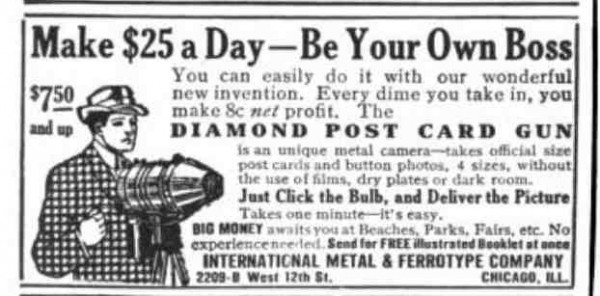
Original ad here.
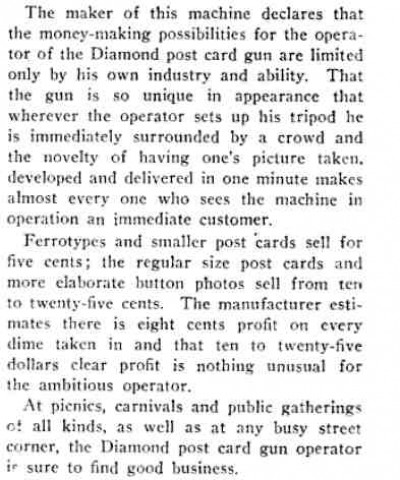
Original text here.
I am uncertain about how the technology of 1914 allowed for one-minute development of photos. But somehow they managed, as you can see from the buttons below.
And damn, that was one gorgeous hunk of equipment!
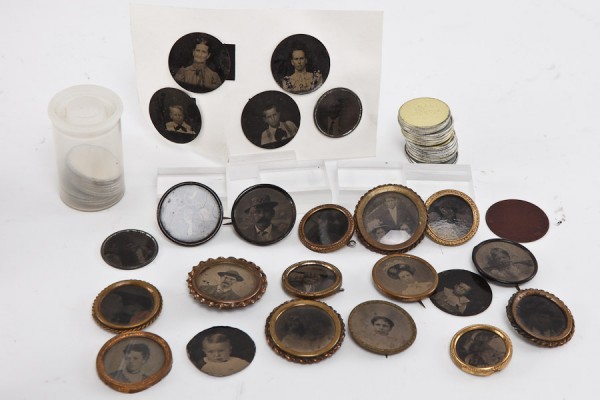
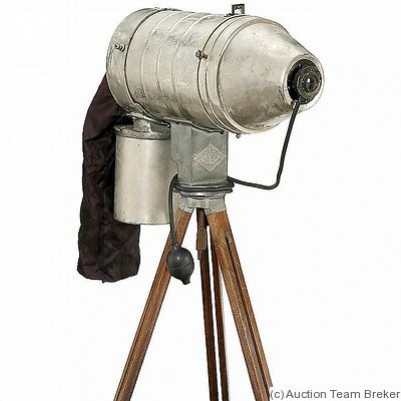
Posted By: Paul - Tue Apr 07, 2015 -
Comments (7)
Category: Business, Hobbies and DIY, Photography and Photographers, 1910s
Your face on a pancake
Technology marches onward! Product development company Kinneir Dufort has created a machine that can print faces onto pancakes. It explains:

Posted By: Alex - Mon Feb 23, 2015 -
Comments (7)
Category: Food, Inventions, Photography and Photographers, Technology
Shampooed Hair Art
Photographer Cheuk Lun Lo has drawn inspiration from shampoo, creating a photo series in which he focuses on heads of hair all lathered up and twisted into various shapes. More info at Designboom.


Posted By: Alex - Tue Feb 03, 2015 -
Comments (7)
Category: Art, Hygiene, Photography and Photographers, Hair and Hairstyling
Flashcube!
I remember when Flashcube and I protested the war at the Pentagon, dropped acid with Timothy Leary, and saw the Grateful Dead at Fillmore West. What an integral part of that decade he was!
Posted By: Paul - Sat Dec 06, 2014 -
Comments (5)
Category: Business, Advertising, Products, Photography and Photographers, 1960s
19,998 And Counting
This entry is weird only in the fact that it's happened to one of our own through the magic of the internet. The number in the title represents the number of times the photos in this person's on-line offering have been looked at by visitors to either the site itself, Google Maps, or Google Earth. The back story goes something like this:Several years ago I posted a single, simple little photograph of a village lane that could have been constructed a hundred, a thousand, or more years ago. To my surprise, it was, very quickly, viewed hundreds of times and I'm certain there weren't that many inhabitants of that village! A few year later I offered a nice little photo of a freshly painted iron bridge in Southern Georgia. To date, that photo has been views (and hopefully enjoyed) over 1,500 times.
Many years ago I held a one-man photo exhibition of my B&W work that was critically acclaimed in a few news papers, inspired at least one budding photographer, and proved that one professor really didn't know everything he thought he did about photography. Oh, yea, and almost 200 people came to see the show. A whole TWO HUNDRED!
As of today, I've been able to reach out 19,998 times to people all around the world. What an amazing thing that is both for me, as an artist, and for the person who's seen my offerings and been inspired to visit the places, or been given an opportunity to remember a good time in their life, or to just enjoy the photo for itself. What a rush!
If you'd like to view the photos you're most welcome to follow this link. And, if you've got some photos you think people would like to see put them up share the fun.
Posted By: Expat47 - Sat Sep 20, 2014 -
Comments (7)
Category: Photography and Photographers
Who owns the selfie?
1) Some monkey took a 'selfie' with a professional photographer's equipment.2) Wikipedia used the image.
3) The photographer claimed copyright & brought a £10,000 suit.
Where do you stand on this? Who has the rights to the image?

Posted By: Expat47 - Thu Aug 07, 2014 -
Comments (12)
Category: Animals, Photography and Photographers, Lawsuits
Tokyo Compression
Photographer Michael Wolf took a series of photos he calls "Tokyo Compression" showing commuters in the Tokyo subway during rush hour.The Southern California version of this would be thousands of people sitting alone in cars on the freeway, going nowhere.
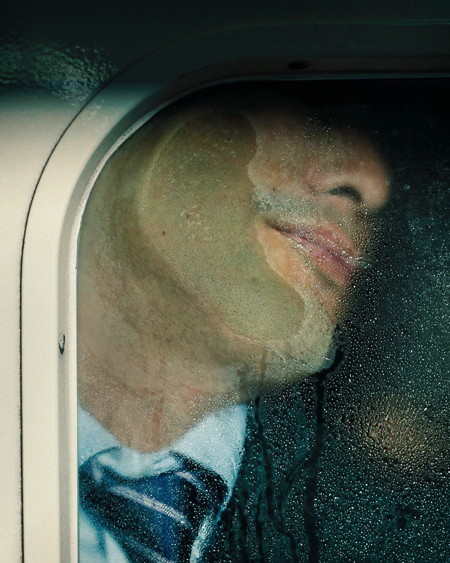
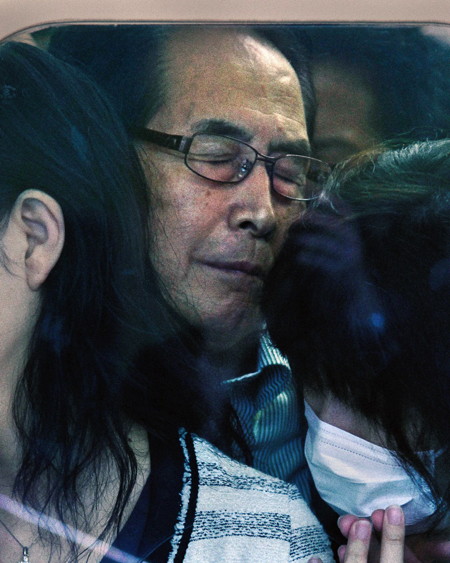
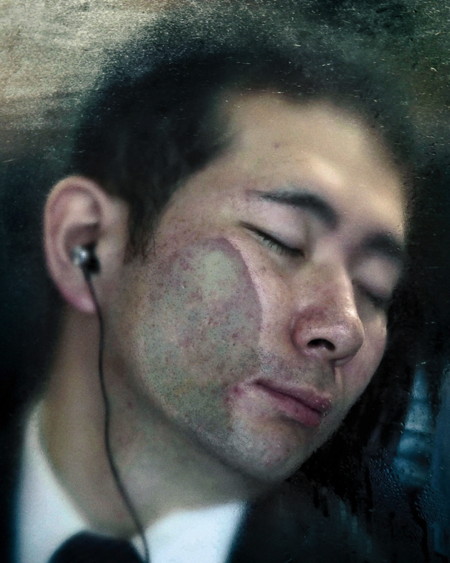
[via World's Best Ever]
Posted By: Alex - Sun Jul 27, 2014 -
Comments (4)
Category: Photography and Photographers, Travel
Toaster Selfie

Posted By: Alex - Sat Jul 19, 2014 -
Comments (4)
Category: Food, Photography and Photographers
Provide the Photo Context
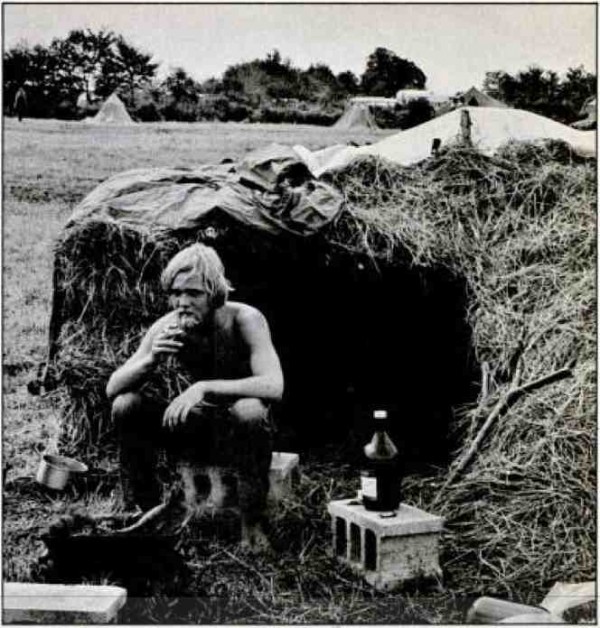
This is the complete image as it was printed, no cropping. Can you provide the context?
1) Homeless person at encampment
2) Migrant laborer at rest
3) Hippie at festival
4) Redneck sentry at site of still
Go here for the answer.
Posted By: Paul - Wed Jun 25, 2014 -
Comments (11)
Category: Photography and Photographers
The Century Camera
Here's the latest project from artist Jonathon Keats, whose work has been posted about on WU quite a few times before (such as here and here). He writes:Some more details:
Participants will be free to hide their cameras anywhere in Berlin that they deem worthy of long-term clandestine observation, and they'll be expected to keep the location secret into old age. At that stage, the participant will reveal the location to a child, who in turn will be responsible for keeping the secret into adulthood, so that 100 years from now one person in the world will know where to retrieve each camera. Whoever brings a camera back to Team Titanic in 100 years will collect the 10-euro deposit, and the 100-year photo will be extracted from the sealed pinhole canister for inclusion in a special Team Titanic exhibition. The exhibit is scheduled to open on 16 May 2114.
Full details at teamtitanic.com.


Posted By: Alex - Mon May 12, 2014 -
Comments (6)
Category: Photography and Photographers

| Who We Are |
|---|
| Alex Boese Alex is the creator and curator of the Museum of Hoaxes. He's also the author of various weird, non-fiction, science-themed books such as Elephants on Acid and Psychedelic Apes. Paul Di Filippo Paul has been paid to put weird ideas into fictional form for over thirty years, in his career as a noted science fiction writer. He has recently begun blogging on many curious topics with three fellow writers at The Inferior 4+1. Contact Us |




